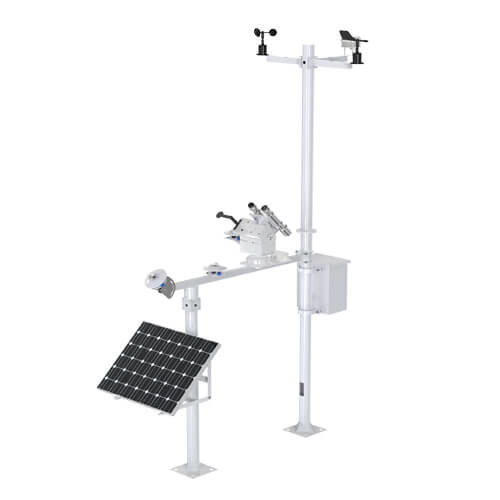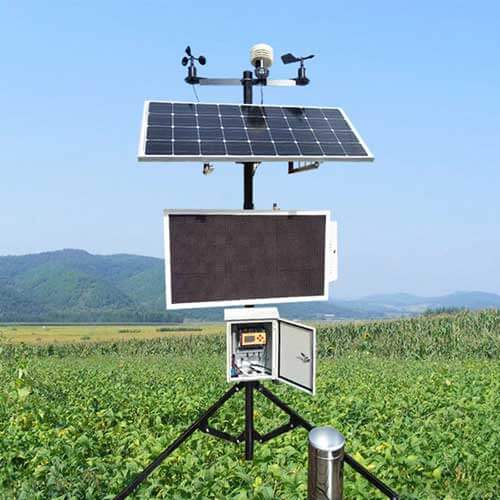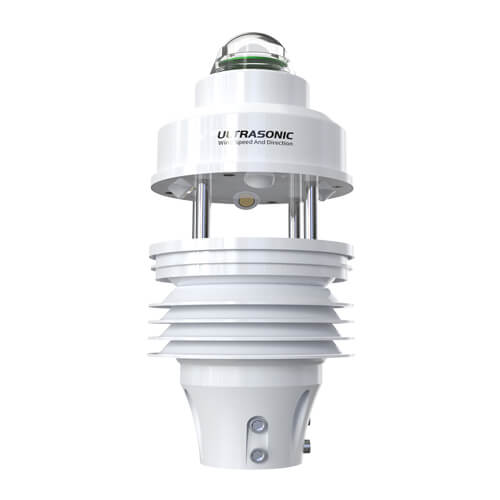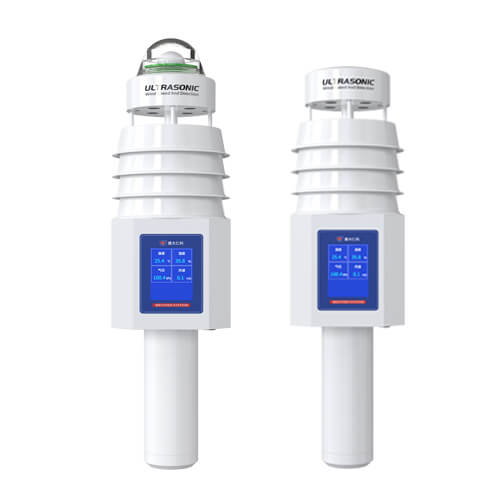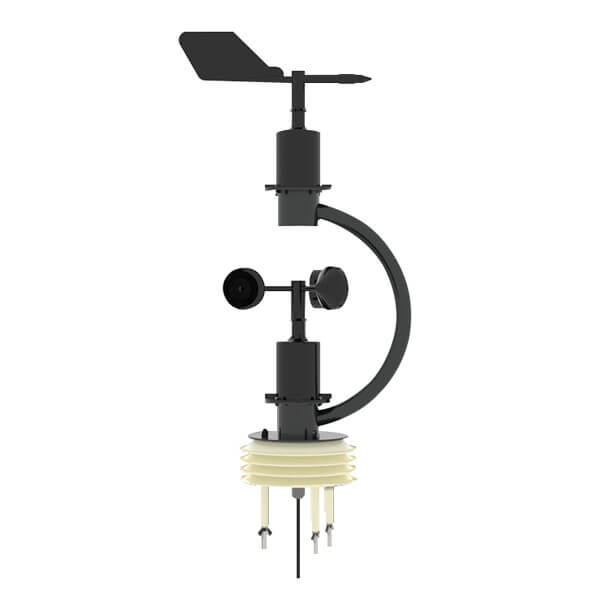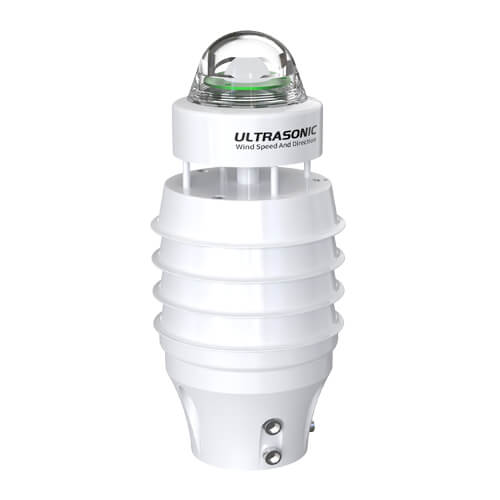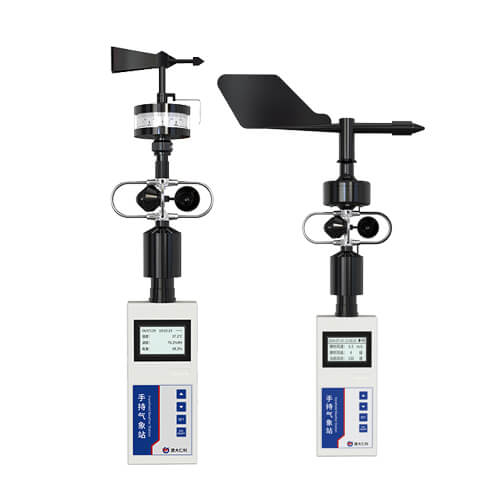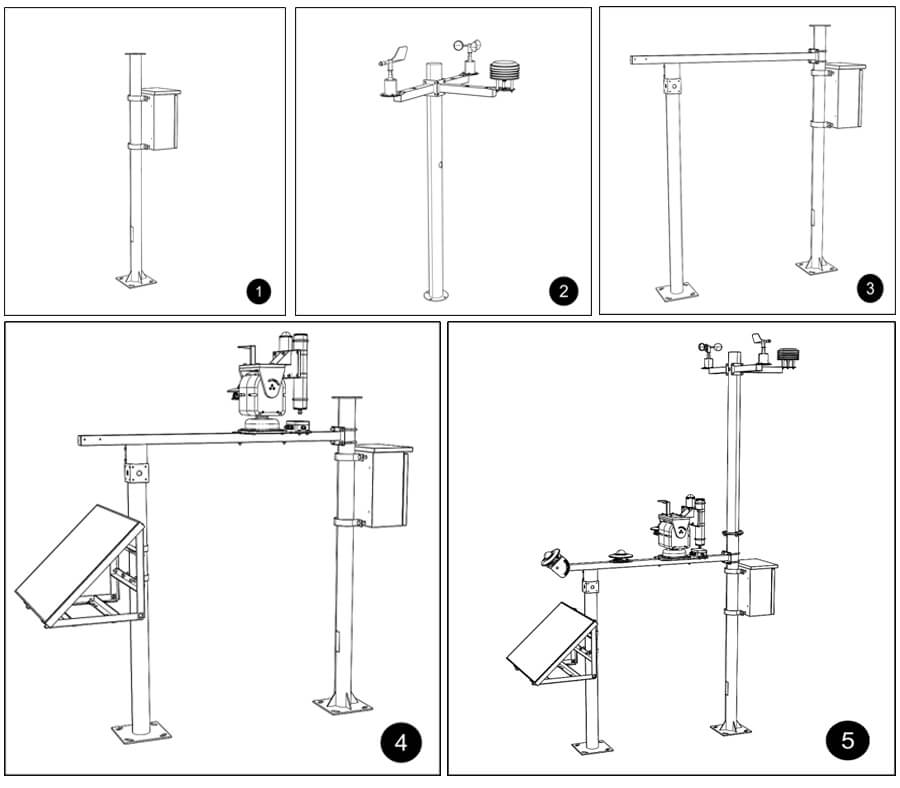Table of Contents What are weather instruments? Weather instruments, are specialized equipment used in weather forecasting, weather monitoring and other meteorological service areas. It can
PV Weather Station
The RS-GFQXZ-EX is equipped with our full range of high-precision sensors to deliver a complete environmental monitoring solution, specifically designed to optimize photovoltaic (PV) power generation. This PV weather station supports multiple sensor configurations, including automatic solar radiation sensors, a temperature and humidity sensor, a wind speed and direction sensor, a barometric pressure sensor, and so on. Engineered for easy installation on any solar power project, the RS-GFQXZ-EX supports Modbus RTU communication and offers an optional Ethernet TCP connectivity for seamless data integration with solar monitoring systems.
- Model: RS-GFQXZ-EX
- MOQ: 1 PCS
- Delivery date: within 24 hours
- Price:USD 2348
Renke PV Weather Station
The photovoltaic weather station is powered by a solar energy system and has a built-in wide-temperature colloid maintenance-free battery. The PV weather monitoring system can upload data directly to our free environmental monitoring cloud platform via Ethernet. Customers can view data and manage equipment anytime and anywhere through web login or APP. This PV weather station is mainly used for environmental monitoring of photovoltaic power stations.
PV weather station description
RS-GFQXZ-EX is a complete PV weather station developed and produced by our company. It can collect solar tilt radiation, sunshine hours, total solar radiation, direct solar radiation, scattered solar radiation, wind speed, wind direction, temperature, humidity, longitude and latitude, and component temperature. Among them, the solar radiation uses a fully automatic solar tracking system to automatically track the sun, which solves the shortcomings of personnel going to the site for maintenance, and uses sensor tracking and GPS solar trajectory to ensure high-precision tracking.
PV weather station features
The photovoltaic weather station is equipped with high-precision sensors and advanced data processing systems to ensure the accuracy and reliability of the data. Through these data, the power station operators can more accurately understand the performance of photovoltaic modules under different meteorological conditions, and take corresponding measures to improve power generation efficiency and extend the life of the equipment.
In addition to data monitoring and recording functions, the photovoltaic detection weather station also has an alarm function. When the weather station detects meteorological conditions that may have an adverse impact on the operation of the photovoltaic power station, such as extreme high temperatures, strong winds or heavy rains, it will immediately issue a warning signal so that operators can take timely measures to protect the power station equipment.
The pole is the basic structure of the PV weather station. We use a double pole design to accurately calculate the distance between the equipment, so that the impact between the equipment is reduced to zero. The high-strength pole mounting frame enables the photovoltaic weather station to withstand severe weather such as strong winds, rain, and snow when working outdoors.
The plastic spray waterproof box can protect the electrical components inside the pv weather station, and its waterproof and dustproof effect can effectively extend the service life of the equipment. The battery is used as a backup power source to ensure that the weather station can continue to work in the case of insufficient solar energy or power outage.
PV weather station designed for solar operation. The solar panels of the photovoltaic weather station are responsible for capturing solar energy and converting it into electrical energy to provide power for the entire weather station. The mounting bracket firmly supports the solar panel to ensure its orientation angle and better receive solar energy.
Renke’s photovoltaic weather station is easy to assemble and can be operational within minutes. Our customizable range of photovoltaic meteorological monitoring systems offers tailored solutions for any solar energy project. Contact us today for personalized service — we will design a powerful and reliable solution specifically suited to your business needs.
Parameters and Maintenance
| Power supply | External power supply | 220V AC |
| Solar power supply | Solar panels and batteries (Battery life is about 2~3 days) | |
| Data upload interface | Ethernet | |
| Direct radiation | Range | 0-2000W/m² |
| Accuracy | ±3% | |
| Resolution | 1W/m² | |
| Diffuse radiation | Range | 0-2000W/m² |
| Accuracy | ±3% | |
| Resolution | 1W/m² | |
| Total radiation | Range | 0-2000W/m² |
| Accuracy | ±3% | |
| Resolution | 1W/m² | |
| Automatic sun tracker | Vertical angle 0-90 degrees, horizontal angle 0-300 degrees Tracking mode: sun tracking + GPS tracking | |
| Wind speed | Range | 0~70m/s |
| Wind direction | Range | 0-359.9° |
| Solar radiation shield | Temperature | -20℃~+60℃ |
| Humidity | 0%RH~100%RH | |
| Atmospheric pressure | 0-120kPa | |
| Component temperature | -40℃~+120℃ | |
| Data upload interval | 20s~65535s configurable (default 300s) | |
| Note: Only countries north of the Tropic of Cancer can use the GPS function | ||
How to maintain PV weather station?
Regular inspection and maintenance are the basis for ensuring the normal operation of the PV weather station. This includes inspections of brackets, sensors, data collectors, power systems, etc. Make sure that all components are not damaged, not loose, and that the connection lines are intact. Then calibrate the sensors regularly and use standard instruments for comparison to ensure the accuracy of the measured data.
Software updates and maintenance are also important. With the development of technology, the software system of the weather station needs to be constantly updated to adapt to new needs. Regularly check the software update status and install the latest version in time to improve data processing capabilities and stability.
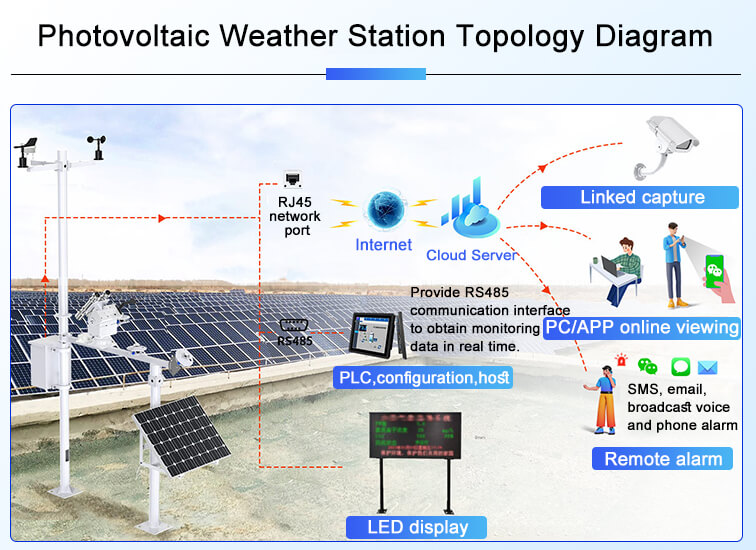
Cleaning and maintenance work is very important. Since the photovoltaic weather station is exposed to the outdoors for a long time, it is susceptible to dust, dirt, etc., which affects the measurement accuracy. Therefore, it is necessary to clean the sensor surface and the device casing regularly to maintain its sensitivity. Chemical solvents should be avoided during cleaning to avoid damage to the equipment.
Lightning protection and grounding protection are equally important. As an electronic device, the PV weather station is susceptible to natural factors such as lightning. Regularly check whether lightning protection facilities, such as lightning rods and grounding wires, are intact. Ensuring that the grounding resistance meets the requirements of the specifications is the key to ensuring the safe operation of the PV weather station.
FAQs
The current version of the PV Weather Station only supports use in areas north of the Tropic of Cancer.
- Solar panel + mounting bracket
- 1.5m vertical pole + 1m extension pole + 1.3m vertical pole + 1m crossbeam + expansion screws
- Plastic spray waterproof box + key + two clamps + screw bag
- Battery * 1
- U-shaped card (the number of U-shaped cards is based on the actual selection)
- Solar radiation shield * 1
- Wind speed sensor * 1
- Wind direction sensor * 1
- Solar total radiation sensor * 1
- Tilt radiation sensor * 1
- Solar tracker * 1
- Direct radiation sensor * 1
- Scattered radiation sensor * 1
- Component temperature * 1
- Warranty card and certificate of conformity
- Use the clamp and screws to fix the waterproof box to the bottom of the M1 pole.
- Install the solar radiation shield, wind direction sensor, and wind speed sensor on the bracket first, then install the bracket on the cross arm, and finally install the three cross arms on the top of the M1 pole with the matching screws.
- Use the U-shaped card to pass through the M1 pole to fix one end of the M9 cross arm (do not tighten it), and insert the other end into the top of the M6 pole and tighten the screws. Then adjust the M6 pole so that the M9 cross arm is completely parallel to the north-south direction (that is, the protruding end of the M9 cross arm is completely pointing to the south). Then tighten the U-shaped card on the M1 pole.
Note: It is recommended to use a compass to help adjust this step. The fully automatic solar radiation transmitter is more dependent on the correctness of the direction (after installation, if there is any deviation, the direction can be calibrated in the device). - Install the solar panel and the fully automatic solar tracking sensor on the M6 pole and the M9 cross arm according to their respective installation methods. And adjust the M9 cross arm U-shaped card (observe the level bubble to ensure that the cross arm is level).
- Install the remaining transmitters to the M9 beam according to their corresponding positions and respective installation methods. The component temperature can be installed to the back of the solar panel using aluminum foil tape.
When installing the whole set of equipment, choose a flat location without any surrounding obstructions and ensure it faces south.
The fully automatic tracking solar radiation sensor is a device that automatically tracks the sun and measures multiple solar radiation parameters. Using solar tracking (light tracking) and GPS tracking, it can automatically calculate the solar altitude angle, azimuth, sunrise and sunset time, and analyze and compare the changes in solar light intensity.
The solar direct radiation sensor uses the thermoelectric principle and can be used to measure solar radiation in the spectral range of 0.3~3μm. The sensing element adopts a winding electroplated thermopile, and the sensing surface is a black coating with high absorption rate. The thermal effect of radiation is used to absorb solar radiation and convert it into a temperature difference electromotive force. It can measure the amount of solar radiation more accurately. The use of multi-layer shading rings and light alignment technology ensures the accuracy of direct radiation measurement.
Please email us for manual.
Related Blogs
Table of Contents The Automated Weather Station (AWS) is an important tool for meteorologists, environmentalists and other weather enthusiasts. It provides comprehensive data on weather
Table of Contents What is meteorological station? Meteorological station is a professional equipment to collect, analyze and process weather data. By collecting and analyzing temperature,
The weather sensors are the sensing end of the weather station and collect various weather-related data. The weather station can obtain the main parameters and
The weather station can provide users with comprehensive weather information over the years. Regular maintenance of weather stations is an important operation to ensure measurement
A complete set of a weather station is composed of two parts: hardware and software. The hardware part includes various weather station sensors, connecting lines,
Table of Contents Do you know where to mount weather station? The weather station should be installed as far as possible on the open ground
It is widely known that ultraviolet (UV) radiation is prevalent in the natural environment, primarily originating from solar. While most UV radiation is absorbed by

